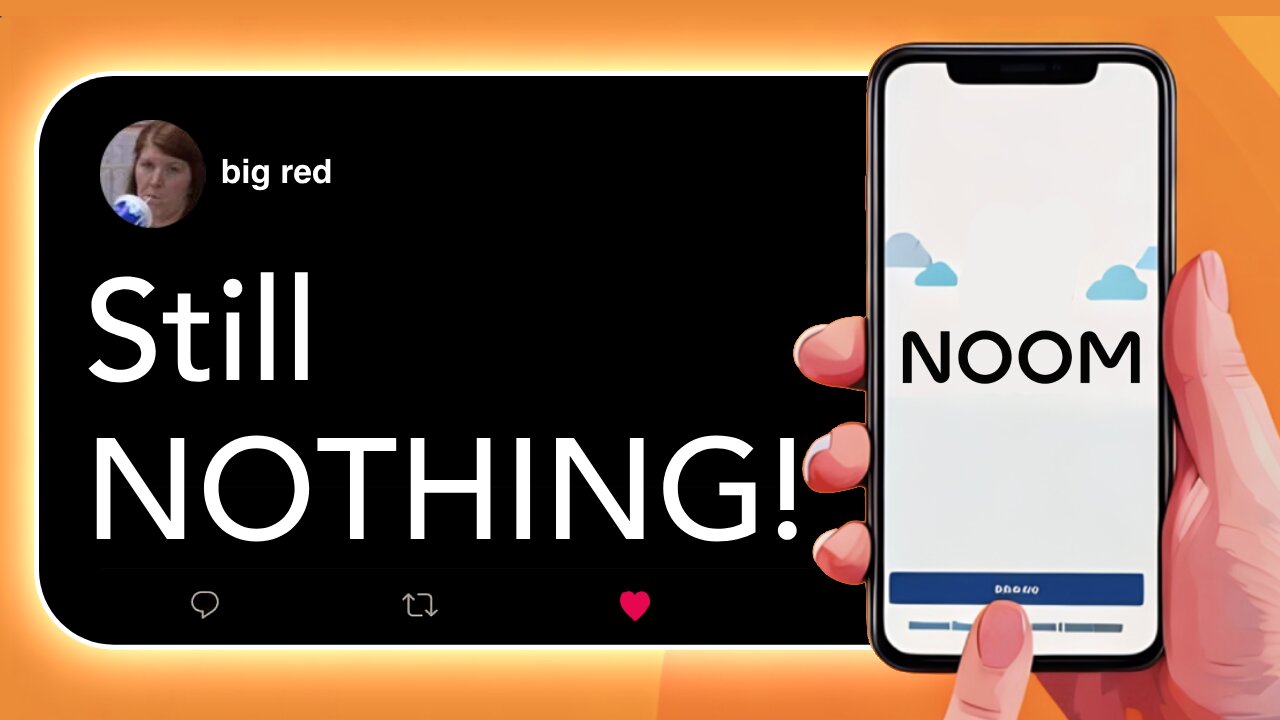Premium Only Content

Why Everyone Eventually Turned on Noom
Noom is the $3.7 billion wellness bubble in disguise that no one talks about. In fact, Noom weight loss program review after review all pointed to the same contradiction. It promised freedom from dieting while being a regular calorie restriction app. Marketed as a psychology-based solution for weight loss, Noom positioned itself as the healthy alternative to fad diets and restrictive eating. It wasn’t just about food—it was about behavior, mindset, and long-term transformation. But beneath the surface, many users discovered something very different.
Noom uses behavior change science and self-monitoring principles, assigning users a daily calorie budget, encouraging detailed calorie tracking, and promoting meal logging as the foundation of progress. What was marketed as mindful eating became, for many, an exhausting cycle of food obsession and guilt. While claiming to combat toxic diet culture, Noom’s core mechanics relied on the same methods that have defined traditional weight loss for decades.
The platform claimed to be a lifestyle, not a diet. But the structure—selecting a goal weight, tracking each bite, and monitoring daily intake—felt eerily similar to older programs like Weight Watchers. The promise of sustainable weight loss through psychology and science was overshadowed by user burnout, passive coaching, and lack of real support.
Many began to ask: Is Noom a diet or lifestyle? And what exactly made it different from the rest? The answer grew murky as experiences revealed deeper issues. Despite the wellness branding and emphasis on mental health effects, the result was often stress, perfectionism, and re-triggered disordered eating behaviors.
The Noom eating disorder concerns gained traction online, especially as former users described how the app cultivated obsession and disconnection from internal hunger cues. What began as empowerment quickly spiraled into control, shame, and food fixation. For some, the daily engagement with the app became a source of anxiety rather than support.
Amid rapid growth and a valuation near 4 billion dollars, the cracks in Noom’s promise became hard to ignore. The backlash against Noom app escalated, with social media flooded by personal stories of failed expectations, mental exhaustion, and emotional strain. What once appeared to be a revolutionary tool for change was now accused of being just another glossy repackaging of harmful habits.
As more people questioned Noom marketing vs reality, it became clear that the platform’s appeal was rooted in clever branding rather than meaningful innovation. It straddled the line between body positivity and weight loss, creating confusion, not clarity.
Now, as users reflect on their journey, the truth about the user experiences with Noom is finally coming to light—one marked by promises of liberation but driven by the same metrics and mindsets that have long dominated the dieting world.
Noom vs traditional diet programs is no longer just a comparison—it’s a cautionary tale.
00:00 The no diet fantasy
00:16 Noom’s effortless weight loss promise
00:52 Anti-diet meets body positivity
01:15 What made Noom different?
01:26 Language, not just design
01:43 Noom's pandemic-era popularity surge
02:00 Goal setting and calorie limits
02:20 Noom is like every other diet?
03:14 The illusion starts to crack
03:54 The tweet that exploded
04:04 Stories of exhaustion and obsession
-
 7:32
7:32
Mini Money Docs™
4 months agoWhat Killed Quiznos? (It Wasn’t Subway)
15 -
 LIVE
LIVE
Drew Hernandez
21 hours agoGOP CIVIL WAR: TUCKER CARLSON DERANGEMENT SYNDROME AT ALL TIME HIGH
913 watching -
 14:44
14:44
Sponsored By Jesus Podcast
1 day agoYou Can't Serve God & MONEY | Is Money the Root of All Evil?
505 -
 2:47:28
2:47:28
Barry Cunningham
7 hours agoYOU'VE BEEN MISINFORMED! GREED IS ACTUALLY GOOD! ESPECIALLY NOW! (AND MORE NEWS)
52.7K21 -
 LIVE
LIVE
SpartakusLIVE
6 hours agoSNIPING in Battlefield 6 - REDSEC || Monday MOTIVATION to CONQUER the Week
237 watching -
 49:25
49:25
ThisIsDeLaCruz
2 hours ago $0.58 earnedBack Stage Pass with Avenged Sevenfold
18.7K7 -
 6:43:40
6:43:40
GritsGG
8 hours agoWorld Record Win Streak Attempt! #1 Most Wins 3880+!
6.87K1 -
 LIVE
LIVE
Tundra Tactical
5 hours ago $2.33 earnedProfessional Gun Nerd Plays Battlefield 6
348 watching -
 1:01:12
1:01:12
Donald Trump Jr.
7 hours agoThe China Matrix with Journalist Lee Smith | TRIGGERED Ep.288
127K83 -
 LIVE
LIVE
Dr Disrespect
12 hours ago🔴LIVE - DR DISRESPECT - ARC RAIDERS - FULL SEND INTO THE RED
1,116 watching